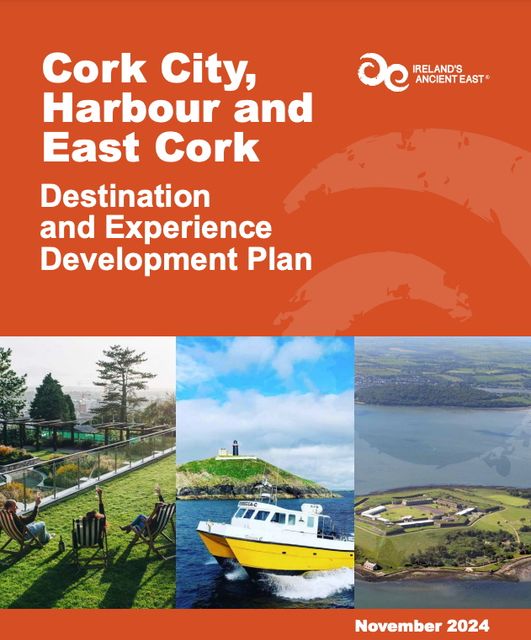Challenges for Cork include a perception of the city as a “first day / last night” destination
Launched this week by Fáilte Ireland, the five-year plan also envisions a “visitor attraction of scale” for Cork City, an extended Lee, City, Harbour Way Greenway, and even suggests a feasibility study for a “Cork Lido”.
The aim of the Destination and Experience Development Plan (DEDP) is to extend the tourism season, encourage longer stays and better disperse business across the region, it says.
Paul Kelly, CEO of Fáilte Ireland, said that positioning Cork’s food story at the heart of the visitor offering would strengthen its position “as an internationally compelling destination”.
While the English Market remains “an iconic” experience, and the city and county’s food scenes are well-established, the plan says “an innovative food market experience in the city delivering a day and evening cultural and market proposition will be a significant addition”.
It also calls for “food and agri-tourism experiences linking Cork markets and restaurants with their food sources”.
Cork’s Marina Market. Photo: Patrick Browne / Fáilte Ireland
The plan is the latest in a raft of DEDPs – which have included Kilkenny, West Cork and Kenmare, and Co Donegal’s Inishowen Peninsula, among others – that see Fáilte Ireland focus increasingly on sustainable and community tourism development models.
Cork City requires “a tourism catalyst in the form of a major visitor attraction”, it says – to address the lack of a major “pull factor”. But it does not say what such an attraction could be.
As well as developing Cork’s districts, it says a Cork Cultural trail “would be a valuable addition” to the city, and suggests examining the potential for a visitor attraction in Páirc Uí Chaoimh, as well as ways to grow visitor numbers at attractions like Spike Island, Fota House and Blarney Castle.
Re-opening the Roches Point Lighthouse as a visitor experience is another action worth examining, it says, as is a possible expansion of the Ballycotton Cliff Walk to link to Roches Point.
Cork’s DEDP is a five-year plan
It also highlights the potential of the Midleton to Youghal Greenway as “a key attractor” for East Cork.
“We are confident that this DEDP has the potential to significantly increase Cork City, Harbour and East Cork’s domestic and international appeal, and grow the visitor economy to create sustainable, high-quality jobs in the sector that will serve to support and strengthen local communities,” Mr Kelly said.
Challenges identified include a perception of Cork City as “not being a family-oriented destination” and also as a “first day / last night” destination, it says.
The plan follows Cork’s inclusion on National Geographic’s ‘Best in the World’ list of 25 travel destinations to visit in 2025.
National Geographic highlighted the Cork City Development Plan, a different document, which it said was “funding ambitious and innovative improvements to be completed by 2028 that will redevelop the port and docklands, refurbish the Crawford Art Gallery and enhance the Cork Event Centre so it can host new concerts, festivals, and exhibitions”.
Fáílte Ireland’s DEDP was developed through a collaborative approach with stakeholders including Cork City Council, Cork County Council, the Port of Cork, Cork Airport, local tourism businesses, Chambers of Commerce, Leader, and local communities and economic groups, it says.
Its implementation will be overseen by a working group operating to 2028.
The full plan is available online here.
This post was originally published on here







